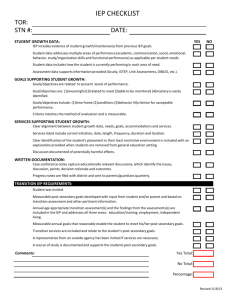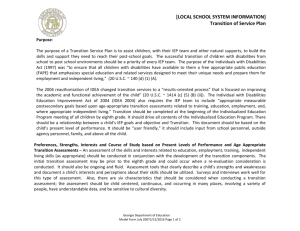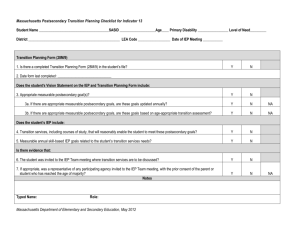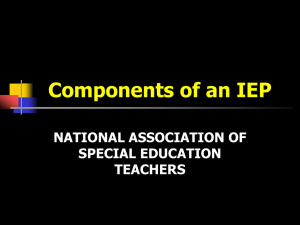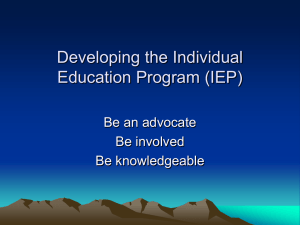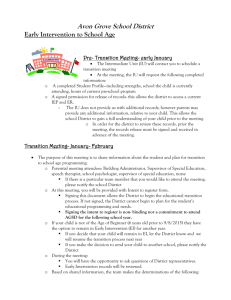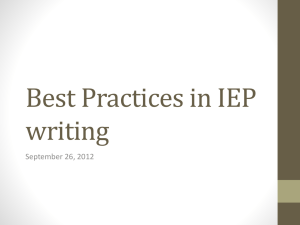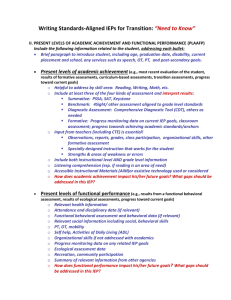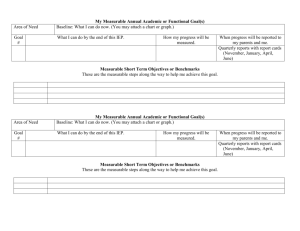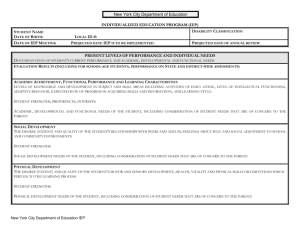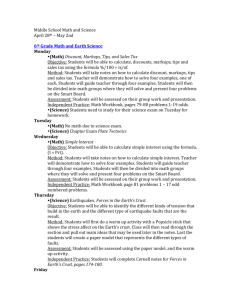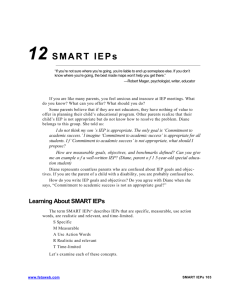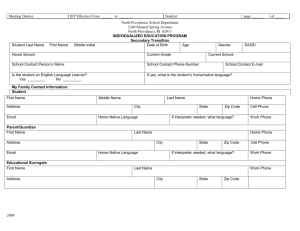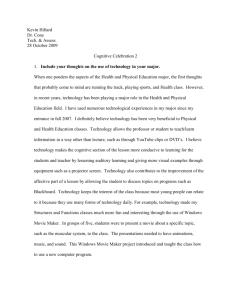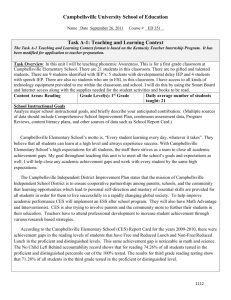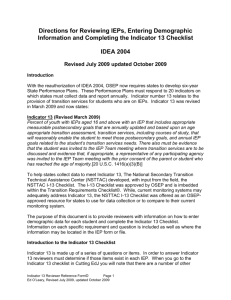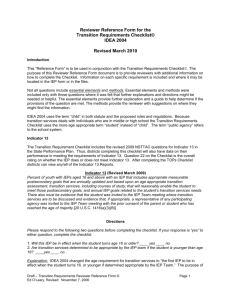IEP Checklist (SMART)
advertisement
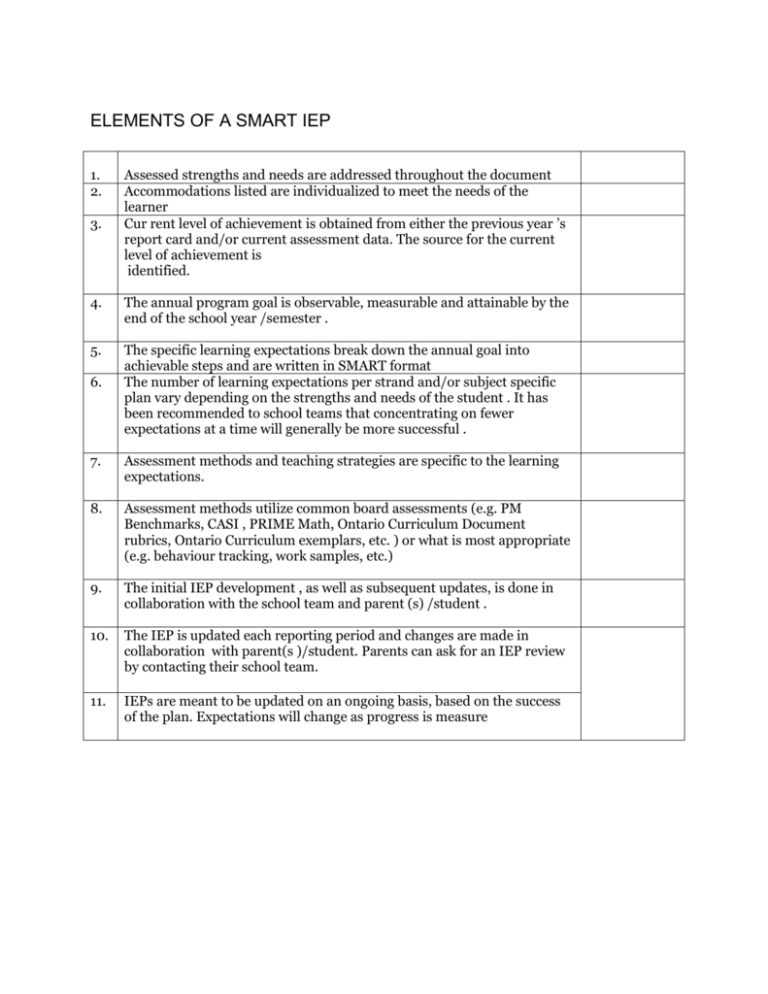
ELEMENTS OF A SMART IEP 1. 2. 3. Assessed strengths and needs are addressed throughout the document Accommodations listed are individualized to meet the needs of the learner Cur rent level of achievement is obtained from either the previous year ’s report card and/or current assessment data. The source for the current level of achievement is identified. 4. The annual program goal is observable, measurable and attainable by the end of the school year /semester . 5. The specific learning expectations break down the annual goal into achievable steps and are written in SMART format The number of learning expectations per strand and/or subject specific plan vary depending on the strengths and needs of the student . It has been recommended to school teams that concentrating on fewer expectations at a time will generally be more successful . 6. 7. Assessment methods and teaching strategies are specific to the learning expectations. 8. Assessment methods utilize common board assessments (e.g. PM Benchmarks, CASI , PRIME Math, Ontario Curriculum Document rubrics, Ontario Curriculum exemplars, etc. ) or what is most appropriate (e.g. behaviour tracking, work samples, etc.) 9. The initial IEP development , as well as subsequent updates, is done in collaboration with the school team and parent (s) /student . 10. The IEP is updated each reporting period and changes are made in collaboration with parent(s )/student. Parents can ask for an IEP review by contacting their school team. 11. IEPs are meant to be updated on an ongoing basis, based on the success of the plan. Expectations will change as progress is measure SMART GOALS Specific: Specific expectations target areas of academic achievement (e.g. literacy) or functional performance (e.g. social skills). They include clear descriptions of the knowledge and skills that will be taught and how the child’s progress will be measured. Learning expectations are individualized and are created based on the assessed strengths and needs of the student. Measurable: Measurable means you can count or observe it. Measurable goals allow parents and teachers to know how much progress the child has made since the performance was last measured. Action Words: SMART expectations use words to describe what the child will be able to do and how they will demonstrate their learning. Examples of action words: apply, explain, point Realistic & Relevant: The expectations outlined in a SMART IEP are realistic for the child to be successful and are relevant to the child’s assessed learning strengths and needs. Time Limited: Time limited expectations enable progress to be monitored at regular intervals. Expectations are usually written so they can be achieved within one term or semester http://scdsb.on.ca/media/files/programs-and-services/specialeducation/SMARTgoalbrochure.pdf
